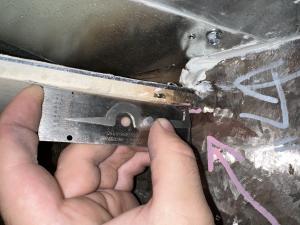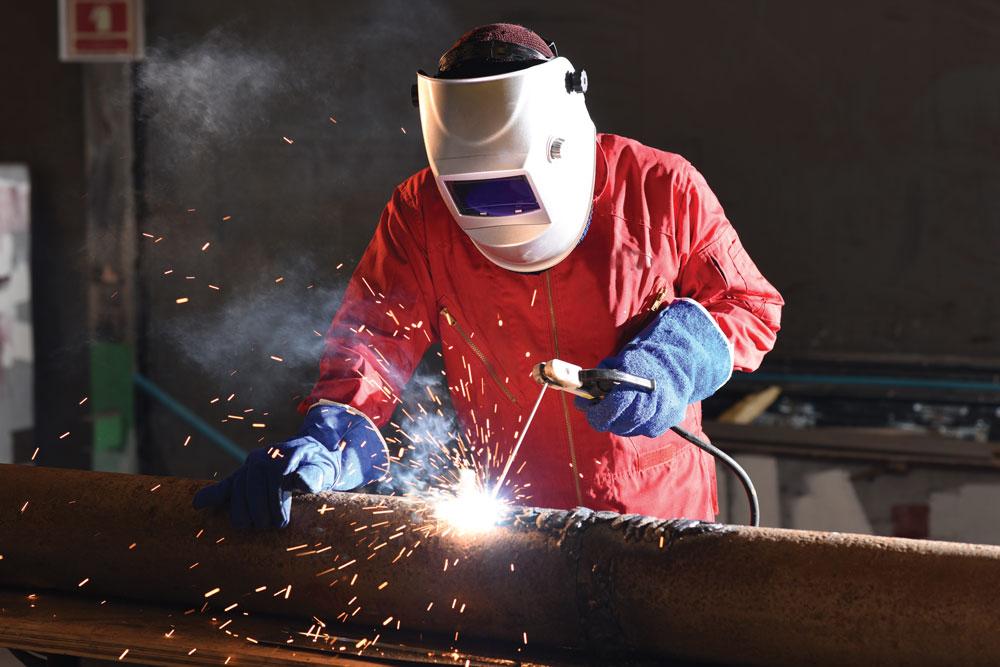The Role of Welding Inspection Racine in Preventing Structural Failures
Wiki Article
Cutting-edge Methods to Fillet Weld Assessment and Screening: Enhancing Weld Top Quality and Compliance Standards
In the world of welding, the high quality and stability of fillet welds play an important role in ensuring the architectural soundness and reliability of various industrial components. With the constant drive for improved effectiveness and compliance with rigid criteria, the exploration of ingenious approaches to fillet weld evaluation and screening has actually come to be necessary.Advanced Non-Destructive Testing Techniques
Utilizing advanced technologies, progressed non-destructive screening methods play an important role in making sure the integrity and top quality of fillet welds. These approaches, such as phased array ultrasonic testing (PAUT) and magnetic fragment screening (MPT), deal comprehensive insights into the weld's interior framework without creating any damages to the product. PAUT, for example, makes use of multiple ultrasonic elements to inspect the weld from different angles, supplying a detailed visualization of possible flaws like absence of combination or splits.In A Similar Way, MPT is reliable in finding surface-breaking issues by applying an electromagnetic field and iron fragments to the weld area. This method is particularly valuable for recognizing stoppages that might endanger the weld's stamina. By employing these advanced non-destructive screening methods, weld inspectors can properly analyze the top quality of fillet welds, making certain compliance with industry requirements and guidelines. The capacity to discover imperfections early on not just improves weld top quality however also avoids costly rework or failings in architectural honesty, underscoring the relevance of these ingenious testing strategies in welding evaluations.
Robotics and Automation in Assessment
The integration of robotics and automation has actually reinvented the evaluation process for fillet welds, improving efficiency and precision in quality analysis. Robotics offer specific control and repeatability in examining welds, guaranteeing constant and trusted results. Automated systems can be programmed to comply with specific examination paths, making certain comprehensive insurance coverage of welds and decreasing the threat of human error.Robot inspection systems furnished with innovative sensors can find and measure weld functions with high accuracy, offering in-depth information for analysis. These systems can determine issues such as cracks, lack of blend, and porosity, enabling timely rehabilitative activities to be taken. Additionally, robotics and automation permit real-time information collection and evaluation, providing instant responses to drivers and facilitating quick decision-making procedures.
In addition, the use of robotics and automation in fillet weld evaluation boosts total productivity by decreasing assessment times and raising inspection throughput. By improving the assessment procedure, suppliers can ensure weld quality and compliance requirements are satisfied successfully, inevitably bring about set you back financial savings and enhanced product high quality.
Using Artificial Intelligence for Analysis
Expert system plays a critical function in enhancing the efficiency and accuracy of analysis in fillet weld inspection procedures. By harnessing the power of AI, inspectors can streamline the analysis of weld top quality and conformity requirements, causing much more exact and reputable results. AI algorithms can swiftly refine substantial amounts of data from weld evaluations, finding flaws or disparities that may be testing to relate to the nude eye. This sophisticated technology enables real-time surveillance of weld high quality, enabling immediate rehabilitative activities to be taken if any type of issues are identified.In addition, AI systems can pick up from past examination data, constantly boosting their ability to determine prospective issues and discrepancies in fillet welds. This flexible understanding capability improves the general top quality control process, decreasing the probability of human mistake and making certain that welds meet the needed requirements. By incorporating fabricated knowledge into fillet weld analysis, industries can accomplish higher levels of effectiveness, uniformity, and conformity in their examination methods.
Portable Devices for On-Site Examination
 Enhancing field assessment effectiveness, the fostering of mobile devices revolutionizes on-site assessment processes for fillet welds. These tools provide versatility and comfort, permitting assessors to perform thorough evaluations in different places, including remote or difficult atmospheres. Portable tools such as ultrasonic testing devices, magnetic particle inspection equipment, and digital radiography systems provide real-time data and high-resolution imaging capabilities, allowing quick decision-making and instant feedback on weld quality.
Enhancing field assessment effectiveness, the fostering of mobile devices revolutionizes on-site assessment processes for fillet welds. These tools provide versatility and comfort, permitting assessors to perform thorough evaluations in different places, including remote or difficult atmospheres. Portable tools such as ultrasonic testing devices, magnetic particle inspection equipment, and digital radiography systems provide real-time data and high-resolution imaging capabilities, allowing quick decision-making and instant feedback on weld quality.One significant benefit of mobile devices is their capability to enhance evaluation procedures, reducing downtime and enhancing total performance. Assessors can quickly carry these tools to different work websites, getting rid of the requirement for transferring hefty equipment or elements to off-site facilities. Additionally, the transportability of these devices promotes cost-effectiveness by minimizing transport costs and speeding up inspection timelines.
In addition, making use of portable click to investigate devices for on-site assessment promotes aggressive quality assurance measures, as assessors can quickly recognize and attend to any type of possible welding flaws or inconsistencies. By incorporating these innovative modern technologies right into on-site evaluation techniques, welding professionals can ensure conformity with industry requirements and enhance weld high quality, ultimately causing enhanced architectural integrity and safety and security in different welding applications.
Assimilation of Data Monitoring Systems
Having actually maximized on-site evaluation procedures through the use of mobile tools, the next stage entails the seamless assimilation of data monitoring systems to even more enhance performance and data evaluation capabilities in fillet weld assessment and screening. Welding Inspection Racine. By incorporating data management systems into the examination process, organizations can enhance information collection, storage, and evaluation. This assimilation allows for real-time surveillance of weld high quality, instant identification of defects, and timely decision-making to correct any type of problems that may develop throughout the evaluation procedure
The combination of information administration systems makes it possible for seamless interaction between various stakeholders included in the inspection process, cultivating partnership and boosting general top quality control steps. Inevitably, the integration of information management systems serves to boost the standards of fillet weld examination and testing, making sure conformity with industry guidelines and enhancing weld high quality.
Verdict
In conclusion, ingenious strategies to fillet weld evaluation and screening have substantially boosted weld quality and compliance requirements. Advanced non-destructive screening approaches, robotics, automation, synthetic knowledge, mobile devices, and data management systems have changed the means weld inspections are carried out. By using these modern technologies, sectors can ensure that welds meet the needed high quality criteria and laws, inevitably improving overall efficiency and security in welding processes.
By employing these advanced non-destructive testing techniques, weld assessors can accurately assess the quality of fillet welds, making sure conformity with market requirements and regulations. Portable devices such as ultrasonic testing gadgets, magnetic particle assessment equipment, and official source digital radiography systems give real-time data and high-resolution imaging abilities, making it possible for quick decision-making and prompt responses on weld quality.
Having actually optimized on-site evaluation view processes via the application of mobile tools, the next stage includes the seamless integration of information administration systems to even more enhance performance and data analysis capacities in fillet weld assessment and testing (Welding Inspection Racine). Inevitably, the combination of data monitoring systems serves to elevate the criteria of fillet weld evaluation and screening, making certain conformity with sector regulations and enhancing weld quality
 In final thought, cutting-edge approaches to fillet weld evaluation and testing have actually significantly enhanced weld top quality and compliance standards.
In final thought, cutting-edge approaches to fillet weld evaluation and testing have actually significantly enhanced weld top quality and compliance standards.Report this wiki page